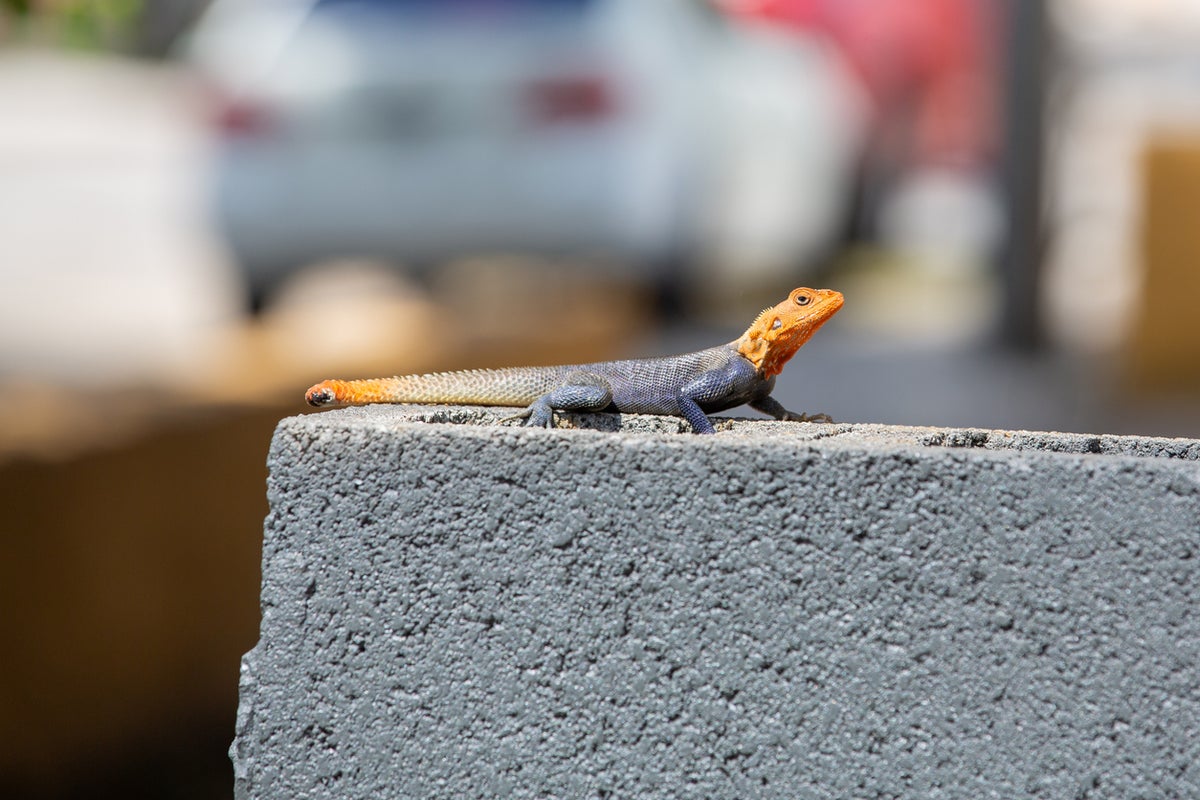
An invasive lizard species that looks as if its head was dunked in bright orange mac-and-cheese powder is taking over Florida.
Peter’s rock agama are darting around neighborhoods this spring, and experts say they’re likely to be increasingly more common in coming months.
That’s concerning for native populations, including the Reef Gecko. Peter’s rock agama may pose a threat to small native insects and reptiles by preying upon native species and out-competing them for resources.
“Peters’s rock agama are larger than most geckos in Florida (note we only have one native species of gecko),” Dr. Steve Johnson told WKMG.
“The agama have spiny scales and a somewhat rough appearance, whereas our geckos have small, flat scales and look much smoother. Also, Peters’s rock agama are active during the day, but the geckos are active mainly at night,” he noted.
The males are up to a foot long, while the females are less than half that size. Breeding males have an orange or red head, a black or indigo body, and a multicolored tail.
Native to sub-Saharan Africa, Peter’s rock agama were first documented in the Sunshine State in 1976, and have been found in more than half of Florida’s 67 counties, according to The Palm Beach Post.
They’re particularly hard to catch, according to the state’s Fish and Wildlife Conservation Commission. The commission encourages residents to report sightings.
“Eradication of established populations in Florida is likely not feasible,” the agency notes.
In addition to eating insects — such as the grasshoppers and crickets — they also eat their own young. They are allowed to be humanely killed on private property with landowner permission, and year-round without a permit or hunting license on 32 Commission-managed lands in southern Florida.
Although they are confined largely to residential areas, they don’t pose a threat to pets or people, although their bite could be painful, according to the University of Florida.
Very little research has been conducted, but it seems unlikely that they have made significant negative impacts on Florida’s environment.
“Because they feed on insects and other small invertebrates, they do have the potential to negatively impact imperiled butterflies, especially in south Florida and the Keys. However, this has not been studied,” the university said.
Source: independent.co.uk


